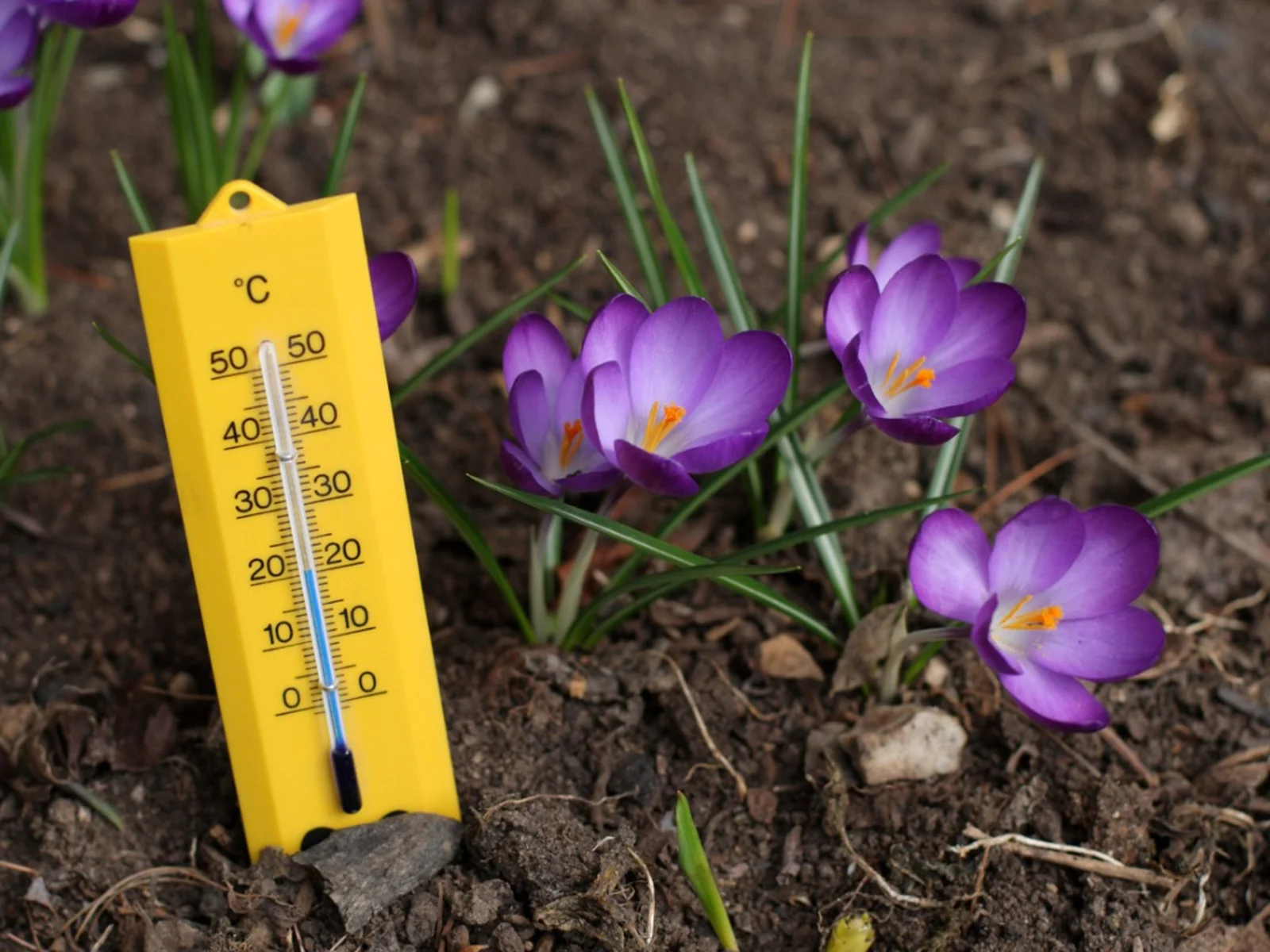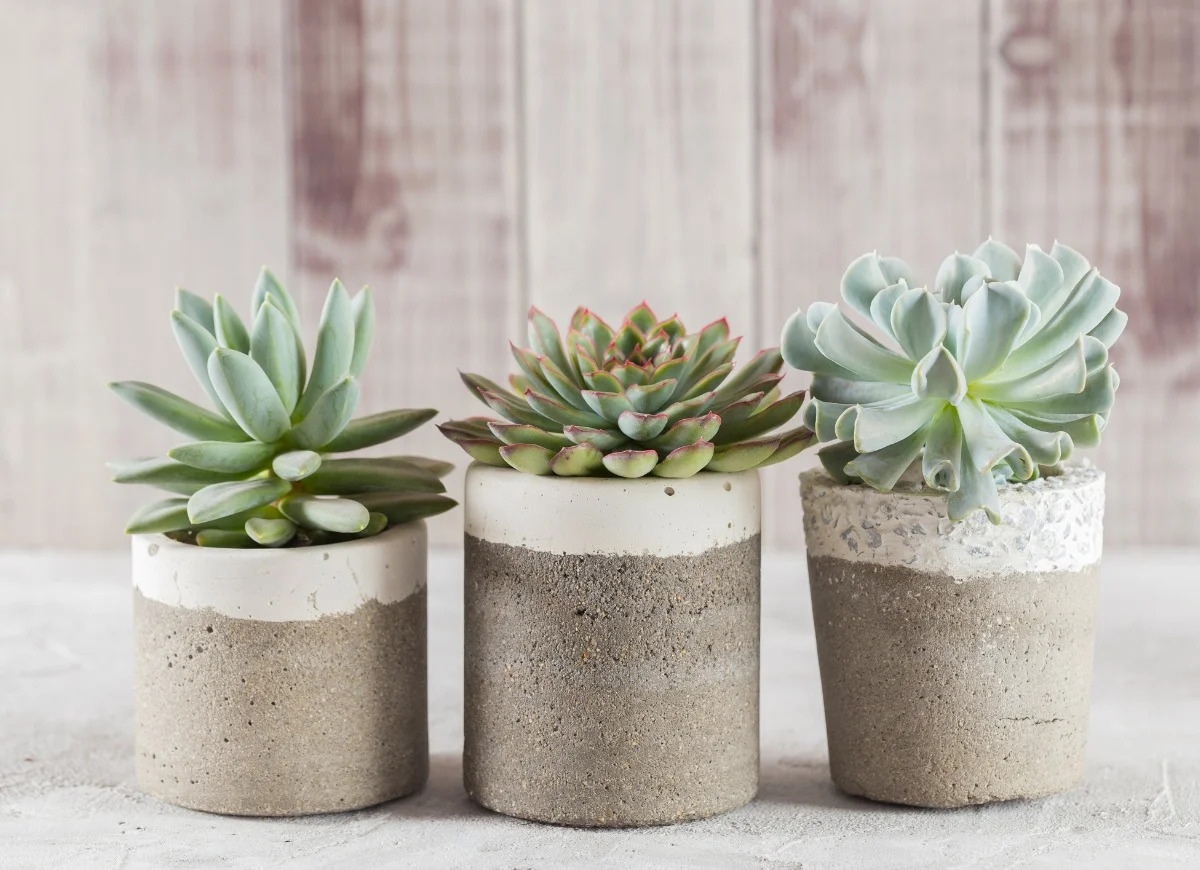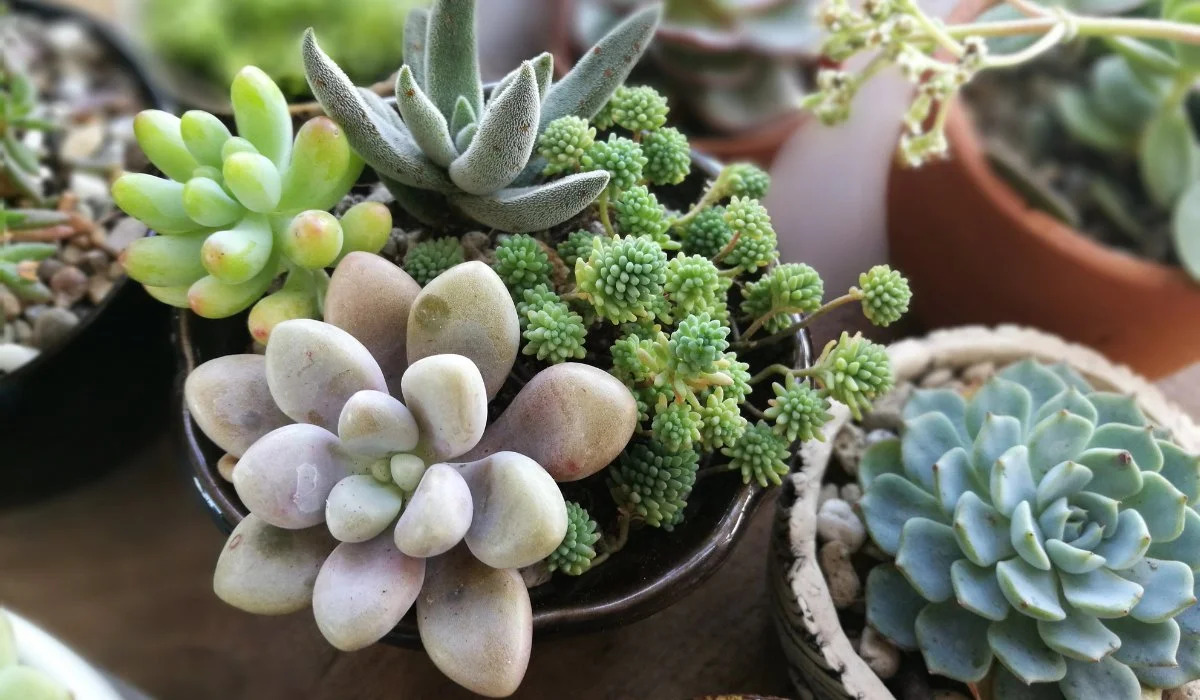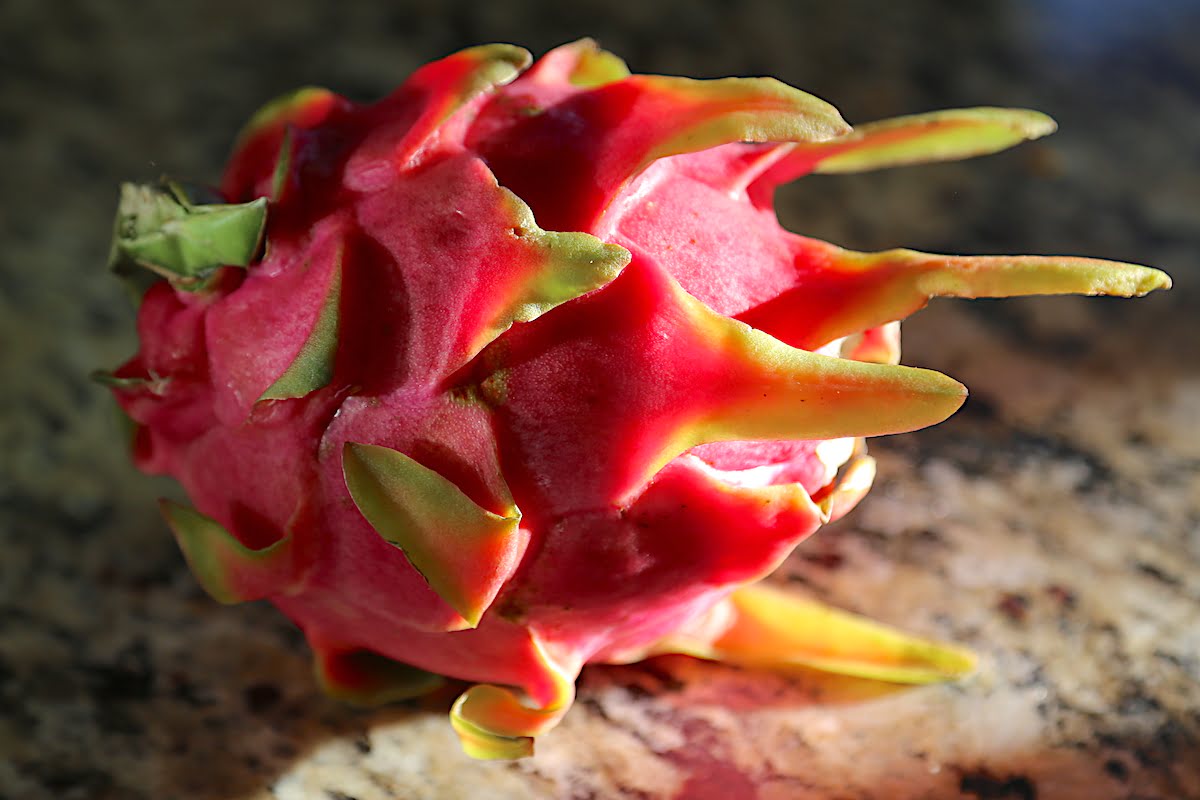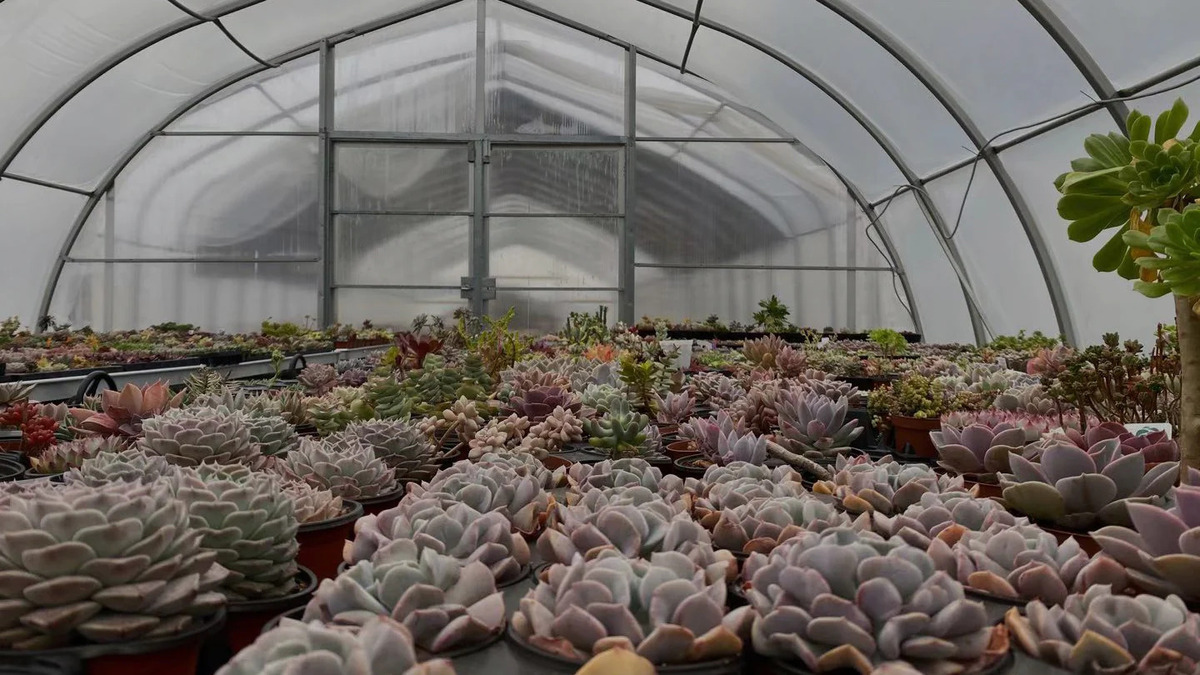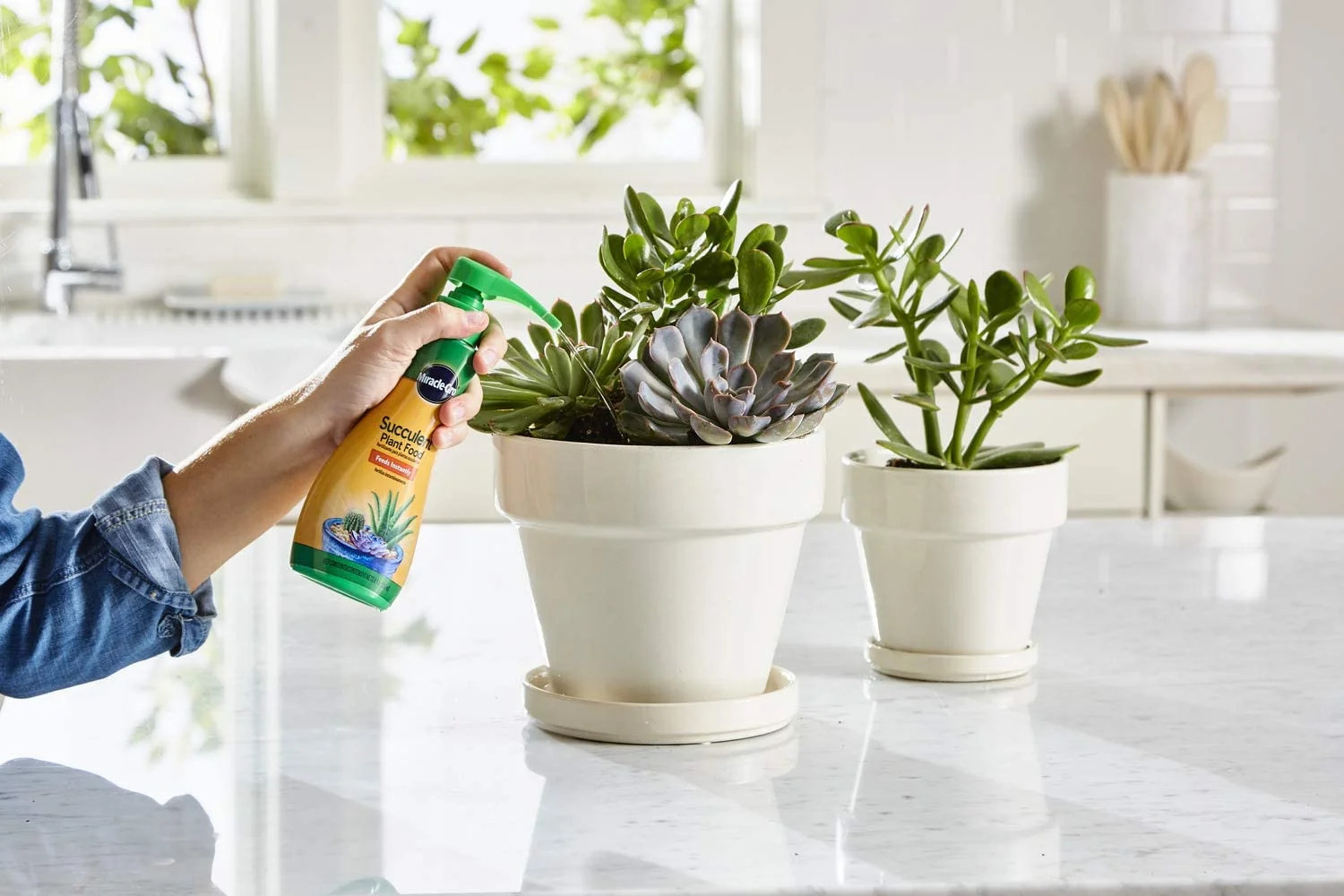Home>Types of Gardening>Ornamental Gardening>What Temperature Is Best For Succulents
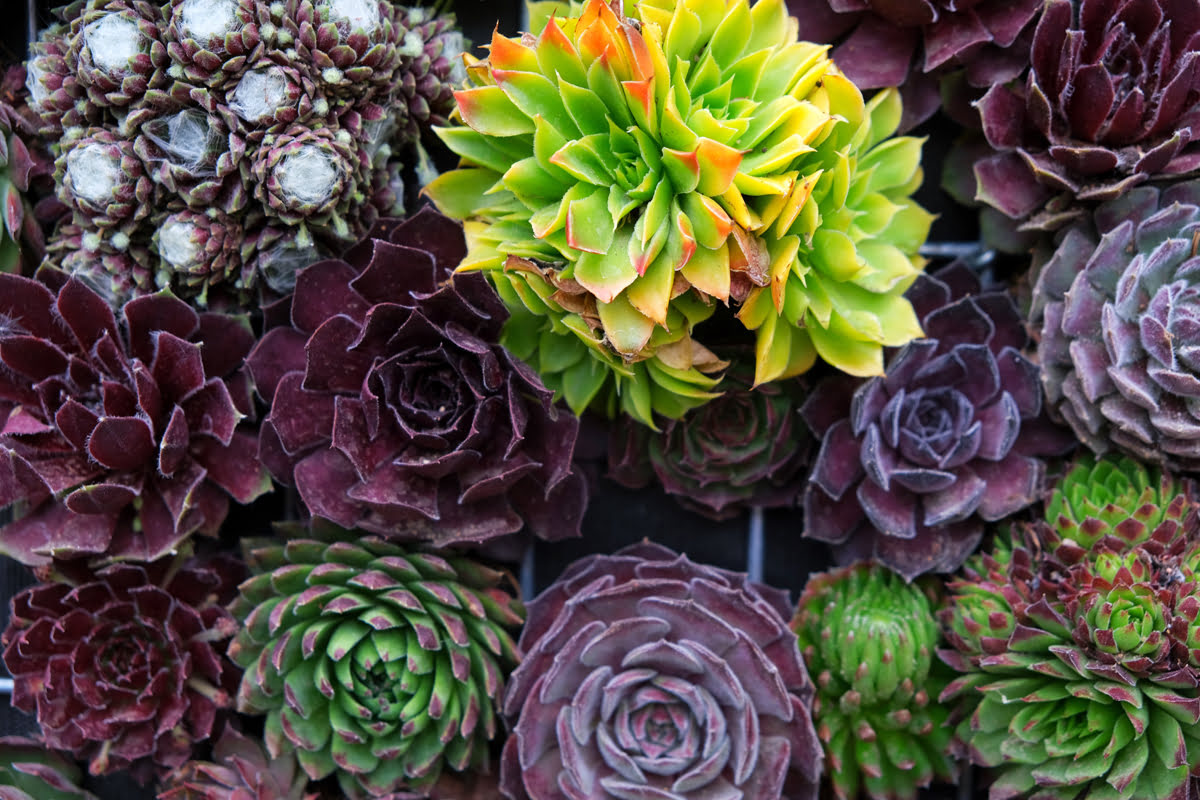

Ornamental Gardening
What Temperature Is Best For Succulents
Modified: January 22, 2024
Discover the ideal temperature for succulents in your ornamental gardening journey. Ensure their health and thriving growth with our expert advice.
(Many of the links in this article redirect to a specific reviewed product. Your purchase of these products through affiliate links helps to generate commission for Chicagolandgardening.com, at no extra cost. Learn more)
Table of Contents
Introduction
Welcome to the world of ornamental gardening, where beauty meets nature. Among the various plants that grace our gardens, succulents have gained immense popularity in recent years. These unique plants not only add a touch of elegance to any space but also require minimal maintenance. However, to ensure their health and well-being, it is crucial to understand the environmental conditions they thrive in.
One of the key factors that significantly impact succulent growth is temperature. As with any living organism, succulents have specific temperature preferences that contribute to their overall health and vitality. Understanding these temperature requirements is essential for both indoor and outdoor gardeners. By providing the optimal temperature, you can create a flourishing oasis of succulents that will bring joy and visual appeal to your surroundings.
In this article, we will explore the ideal temperature range for succulents, the effects of extreme temperatures, and valuable tips for protecting your succulents from temperature fluctuations. By the end, you will have a comprehensive understanding of how temperature influences succulent growth, enabling you to create the perfect environment for your beloved plants.
Understanding Succulents
Succulents are a diverse group of plants, known for their ability to store water in their leaves, stems, and roots. This adaptation allows them to survive in arid environments where water is scarce. Their fleshy leaves, often characterized by unique shapes and textures, enable them to retain moisture for extended periods, making them highly resilient and drought-tolerant.
There is a wide variety of succulents, each with its own distinct characteristics and growth requirements. From the popular Aloe Vera to the colorful Echeveria, succulents come in all shapes, sizes, and colors, making them a favorite choice for indoor and outdoor gardens alike.
One of the remarkable features of succulents is their ability to thrive in different climates and conditions. However, the temperature range in which they grow best can vary depending on the species. Some succulents prefer cooler temperatures, while others thrive in warmer climates.
Aside from their water-storing abilities, succulents have adapted to a wide range of ecosystems, including deserts, mountains, and coastal regions. This adaptability makes succulents a versatile choice for gardeners around the world.
It’s important to note that while succulents are drought-tolerant, they still require regular watering, especially during the growing season. Overwatering can lead to root rot and other issues, so it’s important to strike a balance and provide adequate moisture without drowning the plants.
Now that we have a basic understanding of what succulents are, let’s dive into the importance of temperature in their growth and how it affects their overall well-being.
The Importance of Temperature
Temperature plays a crucial role in the growth and development of succulents. As native inhabitants of various climates, succulents have adapted to specific temperature ranges that provide the optimal conditions for their survival.
Firstly, temperature affects the metabolic processes of succulents. Like all plants, succulents undergo photosynthesis, the process by which they convert sunlight into energy. Temperature influences the rate of photosynthesis, with optimal temperatures resulting in increased energy production and growth. When exposed to temperatures outside their preferred range, succulents’ metabolic processes can become disrupted, leading to stunted growth or even plant death.
Furthermore, temperature affects water absorption and transpiration in succulents. Higher temperatures can enhance water loss through evaporation, placing greater stress on the plant’s water storage capabilities. In contrast, lower temperatures can slow down transpiration, potentially causing waterlogged conditions and suffocation of the plant’s roots. Maintaining an appropriate temperature helps ensure that succulents can efficiently absorb and retain the water they need to thrive.
Temperature also influences the dormancy and flowering cycles of succulents. Many succulents go through distinct phases of growth and dormancy, which are triggered by changes in temperature and light. Proper temperature control helps facilitate these cycles, allowing succulents to rest and rejuvenate during dormant periods and burst into beautiful blooms when the conditions are right.
Lastly, temperature affects the overall hardiness and resilience of succulents. Exposure to extreme temperatures, whether excessively hot or cold, can weaken the plants and make them more susceptible to diseases, pests, and other environmental stresses. By providing the optimal temperature range, you can help fortify your succulents’ defenses and ensure their ability to withstand various challenges.
Understanding the importance of temperature in succulent growth is essential to creating a thriving and healthy garden. In the following sections, we will explore the ideal temperature range for succulents and discuss the effects of extreme temperatures on their well-being.
Optimal Temperature Range for Succulents
Succulents are adapted to thrive in a wide range of climates, but they do have specific temperature preferences that promote their overall well-being. While the ideal temperature range for succulents can vary depending on the species, most succulents prefer moderate temperatures that mimic their natural habitats.
For most succulents, the optimal temperature range falls between 60°F (15°C) to 85°F (29°C) during the day. This range provides the right balance of warmth and coolness for succulents to carry out their metabolic processes efficiently. However, it’s important to consider that temperatures can fluctuate significantly between day and night in certain regions. In such cases, succulents tend to tolerate cooler temperatures at night, often down to 50°F (10°C) without any adverse effects. These fluctuations can mimic the natural environmental conditions found in their native habitats.
It’s worth noting that some succulents are more adapted to cooler temperatures, while others thrive in warmer climates. For example, Sempervivum, also known as the Hens and Chicks plant, is a cold-hardy succulent that can withstand temperatures as low as 20°F (-6°C). On the other hand, Echeveria species prefer warmer temperatures and may suffer from cold damage if exposed to temperatures below 40°F (4°C) for extended periods.
Ensuring that your succulents are within their preferred temperature range is crucial for their growth and long-term health. If you live in an area with extreme temperature fluctuations or a climate that doesn’t align with your succulents’ preferences, there are steps you can take to provide the optimal conditions for them.
In the following sections, we will explore the effects of both cold and hot temperatures on succulents, along with practical tips on protecting your succulents from extreme temperatures.
Effects of Cold Temperatures on Succulents
While many succulents are known for their ability to tolerate drought and dry conditions, they can be sensitive to cold temperatures. Exposure to chilly weather can have detrimental effects on succulents, potentially leading to damage or even death if not properly protected.
One of the primary concerns with cold temperatures is the risk of frost damage. When succulents are exposed to freezing temperatures, the water within their cells can freeze, causing the cells to burst. This damage is often visible as blackened or discolored areas on the leaves or stems. Frost damage weakens the plant and can hinder its ability to photosynthesize and absorb water properly.
Cold temperatures can also slow down or halt the metabolic processes in succulents. The slower metabolism can lead to stunted growth and can even trigger dormancy in some species. Cold-stressed succulents may exhibit a lack of vigor, drooping leaves, or reduced overall vitality.
Furthermore, repeated exposure to cold temperatures without protection can weaken the succulents’ defenses, making them more susceptible to diseases and pests. The stress caused by cold weather can compromise the plants’ immune systems, making them more vulnerable to rot, fungal infections, and insect infestations.
To protect succulents from the negative effects of cold temperatures, it is essential to take preventative measures. One effective method is to bring potted succulents indoors during the winter months or when freezing temperatures are forecasted. If your succulents are planted in the ground, you can cover them with frost blankets or even construct temporary shelters to shield them from the cold.
Providing insulation through mulching can also help in maintaining a more consistent soil temperature and protecting the roots of outdoor succulents. The layer of mulch acts as a barrier, preventing drastic fluctuations in soil temperature and preserving warmth around the plant’s root system.
By understanding the effects of cold temperatures on succulents and implementing appropriate measures, you can safeguard your succulents and ensure their continued health and vitality, even through the colder months.
Effects of Hot Temperatures on Succulents
Succulents are often lauded for their ability to withstand dry and arid conditions, but they can also be affected by excessive heat. While some succulents are more heat-tolerant than others, prolonged exposure to high temperatures can still have detrimental effects on their growth and overall well-being.
One of the primary concerns with hot temperatures is dehydration. Succulents are adapted to store water in their leaves and stems, but extreme heat can cause them to lose moisture at a faster rate. This can lead to desiccation, where the plant loses more water than it can replenish, resulting in shriveled leaves and weakened stems.
Elevated temperatures can also hinder the photosynthetic process in succulents. When exposed to excessive heat, the stomata, or tiny pores on the surface of the leaves, may close to reduce water loss. However, this also restricts the intake of carbon dioxide needed for photosynthesis. As a result, the plants’ ability to produce energy is reduced, leading to decreased growth and potential leaf damage.
In extreme heat, succulents may also experience sunburn. The intense sunlight combined with high temperatures can scorch the leaves, causing discoloration, browning, or even tissue damage. This is especially common in succulents that are used to shaded or partially shaded environments.
Hot temperatures can also impact the root system of succulents. Excessive heat can accelerate evaporation from the soil, causing it to dry out more rapidly. In turn, this can stress the roots and affect their ability to absorb water and nutrients effectively.
To protect succulents from the adverse effects of hot temperatures, it is crucial to provide them with some shade or protection during the hottest part of the day. This can be achieved by placing the plants under shade cloth, moving them to a cooler location, or using plant covers to provide a shield against direct sunlight.
Ensuring adequate irrigation is also essential in hot weather conditions. However, it’s important to strike a balance and avoid overwatering as this can lead to root rot. Watering in the early morning or late afternoon allows the plants to absorb moisture before the evaporation rates peak.
By being mindful of the effects of hot temperatures and implementing appropriate measures, you can safeguard your succulents and ensure they thrive in even the most scorching conditions.
Tips for Protecting Succulents from Extreme Temperatures
Succulents are resilient plants, but they still need some help when it comes to protecting them from extreme temperatures. Whether it’s freezing cold or scorching heat, taking the right precautions can ensure the well-being of your succulents. Here are some practical tips to help you protect your succulents from extreme temperature conditions.
- Know your succulent’s temperature preferences: Different succulent species have different temperature tolerances. Research and understand the ideal temperature range for your specific succulents so you can provide the appropriate care.
- Provide shade during peak sun hours: When temperatures rise, provide partial shade or move your succulents to a spot that offers protection from the intense midday sun. Use umbrellas, shade cloth, or move the plants under the shade of other taller plants or structures.
- Use proper potting mixes: Use a well-draining potting mix appropriate for succulents. This ensures that excess water can easily drain out, preventing waterlogged conditions that can lead to root rot and other problems.
- Mulch and insulate outdoor succulents: Apply a layer of organic mulch around the base of your outdoor succulents. This helps regulate soil temperature, retain moisture, and protect the roots from extreme temperature fluctuations. Just be sure not to pile the mulch directly against the stems or leaves of the plants.
- Water properly: Water your succulents deeply and less frequently to encourage healthy root growth. Allow the soil to dry out between waterings, and avoid overwatering, as this can lead to root rot. Adjust your watering schedule based on temperature and humidity levels.
- Provide proper ventilation: Ensure that your succulents have adequate airflow, especially in humid conditions. Good airflow helps prevent the growth of fungal diseases and keeps the plants dry, reducing the risk of rot.
- Insulate potted succulents in winter: If you live in a region with freezing temperatures, bring potted succulents indoors or place them in a protected location to shield them from frost. You can also wrap the pots with bubble wrap or frost blankets for added insulation.
- Monitor and observe: Regularly inspect your succulents for any signs of stress or damage caused by extreme temperatures. Look for discolored leaves, wilting, or unusual growth patterns. Identifying and addressing issues early can prevent further damage.
- Gradually acclimate succulents: If you are moving your succulents from one temperature extreme to another, such as indoors to outdoors, or vice versa, acclimate them slowly to minimize stress. Gradually expose them to the new environment over a period of weeks.
- Consider microclimates: Take advantage of microclimates in your garden, such as areas near walls or under trees, which may offer slightly different temperature and moisture conditions. Choose the right location for your succulents based on their specific preferences.
By following these tips and implementing appropriate measures, you can protect your succulents from the adverse effects of extreme temperatures and create an environment in which they can thrive. Remember to monitor your plants regularly, adjust your care routine as needed, and enjoy the beauty and resilience of your succulent garden.
Conclusion
Succulents are remarkable plants that add beauty and charm to any garden or indoor space. Understanding the impact of temperature on succulent growth is key to their overall health and vitality. By providing the optimal temperature range, you can create an environment that allows your succulents to thrive.
Temperature plays a crucial role in succulent growth, affecting their metabolic processes, water absorption, dormancy cycles, and overall hardiness. In the optimal temperature range of 60°F (15°C) to 85°F (29°C), succulents can efficiently carry out photosynthesis, regulate water balance, and exhibit healthy growth patterns. However, extreme temperatures, be it cold or hot, can pose risks to succulents, leading to frost damage, dehydration, sunburn, and weakened defenses.
To protect your succulents from extreme temperatures, it is important to provide shade, proper ventilation, and appropriate watering practices. Insulation, such as mulching or covering, can help regulate soil temperature and shield the plants. Understanding the specific temperature preferences of your succulents and gradually acclimating them to new environments will also contribute to their long-term health.
By following these guidelines and taking the necessary precautions, you can create a thriving oasis of succulents that bring beauty and joy to your space. Remember to monitor your succulents regularly, adjust care routines as needed, and continue to explore the unique characteristics and requirements of different succulent species.
Embrace the world of succulents, and let their resilience and natural beauty inspire your ornamental gardening endeavors.

